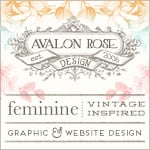I'm so excited to blog about my experience with milk paint! I chanced this while I was surfing the web and was just dying to play with it. My first experience with milk paint was many years ago. The first milk paint I had was in liquid form. Even now, I think they are relatively unknown (at least in my part of the world), except for those who are probably DIY enthusiasts who love doing furniture makeovers. Traditionally milk paint are used on wooden furniture and other textured surfaces to create an antique look, which is why it is quite popular with people who love that style.
These are not sold locally, so I ordered mine overseas. While doing my research on milk paint, I became fascinated with it even though I don't have any antique furniture to try it with. So while others will use it with furniture, I will use it for my dollhouse miniatures.
What is milk paint?
There are many types and brands of milk paint out in the market, some are in liquid paint form which is ready to be used, and some are in powder form. Today I'm going to try out the milk paint powder which requires mixing with water.
Milk paint is an eco-friendly, all-natural paint which contains milk protein (casein), chalk, clay, natural pigments.
Suitable for both interior and exterior painting and is mold resistant.
It is ideal to paint on various types of surfaces, including wood, plaster, drywall etc.
It is environmentally friendly, non-toxic and does not give off noxious vapors (often called VOCs)
How is the texture different from acrylic paint
I can only speak from my own painting experience, but the milk paint offers a very smooth, even painting finish that I can't get from acrylic paints. Sometimes acrylic paints that are kept too long ends up being lumpy, but so far my liquid milk paint doesn't end up like that.
Ways to use milk paint
Simply paint on porous surfaces to create a finish that doesn't chip or flake with time (which is perfect if you make your own dollhouse miniature furniture).
You can add more water if you want to create a "colored stain" or "faded wash" look.
If you paint directly over painted surfaces, allow the paint to "self-distress" and chip away randomly for an authentically aged look. (I haven't tried this yet, but will do so soon!)
Preparing for my experimentation!
So I got my stuff ready, the usual - paint brush, a little container to hold the paint, and a small scoop container to efficiently measure powder and water. You can use a spoon if you have, but I didn't have a deep craft spoon. You can use a small cap or container as well.
For this experimentation, I must tell you that the colour I was going to try out was a light mint blue/green colour. But please note that the colour of the milk powder is almost cream. See below photo. So please do not be alarmed!
The milk paint is ready to be mixed with water.
As soon as I added in 1 scoop of water and started stirring, the colour changes!
Stir well, until the lumps disappear. This was stirred halfway, as you can see there are still some lumps.
The ratio of powder and water is 1:1 But there are no hard rules to this, you can add more water if you like, which I did.
You can start painting immediately after the milk powder is dissolved.
The outcome of the colour reminds me of a discontinued FolkArt colour - Mint Green. Many of my students can't find this colour at the craft store anymore, so this will be the replacement for that colour.
I painted 3 coats over my furniture and it covers well.
End result colour
It was a fun experiment. I hope you enjoyed my little review of the milk paint! Once I tried the other experiment, I will blog about it!






















